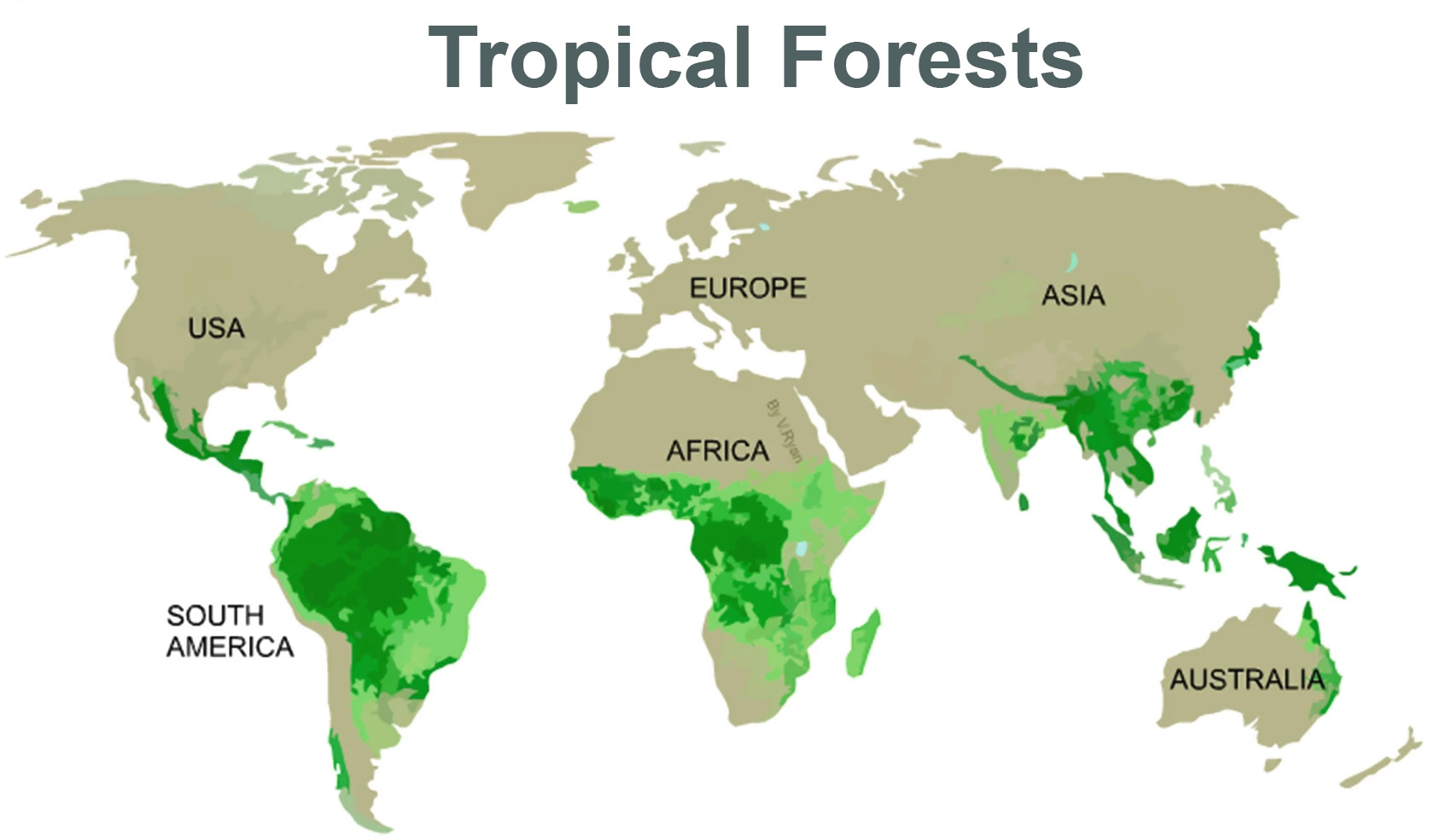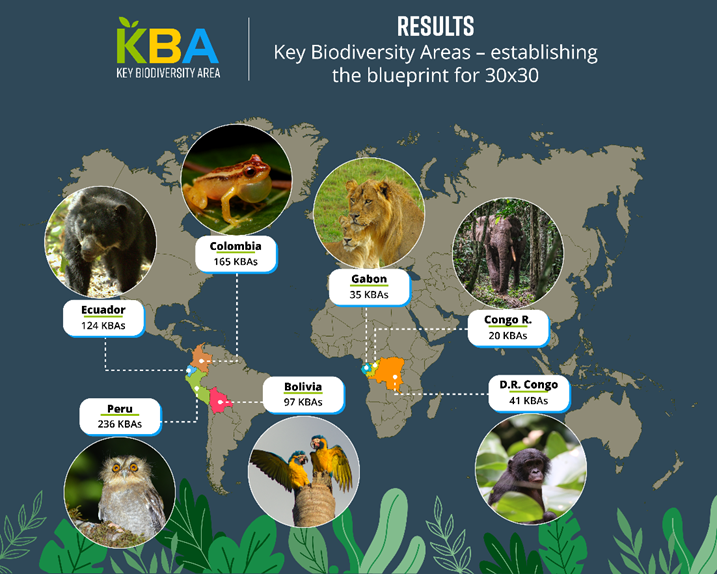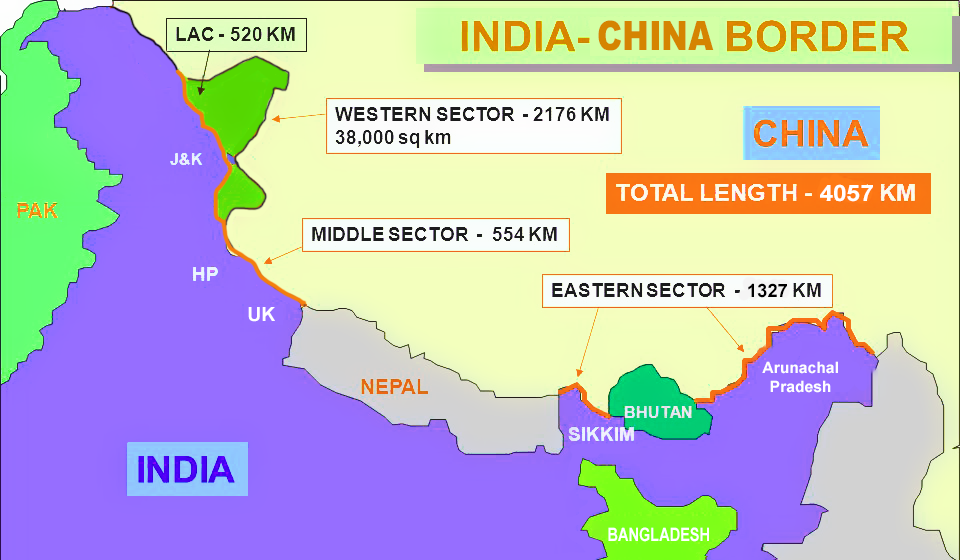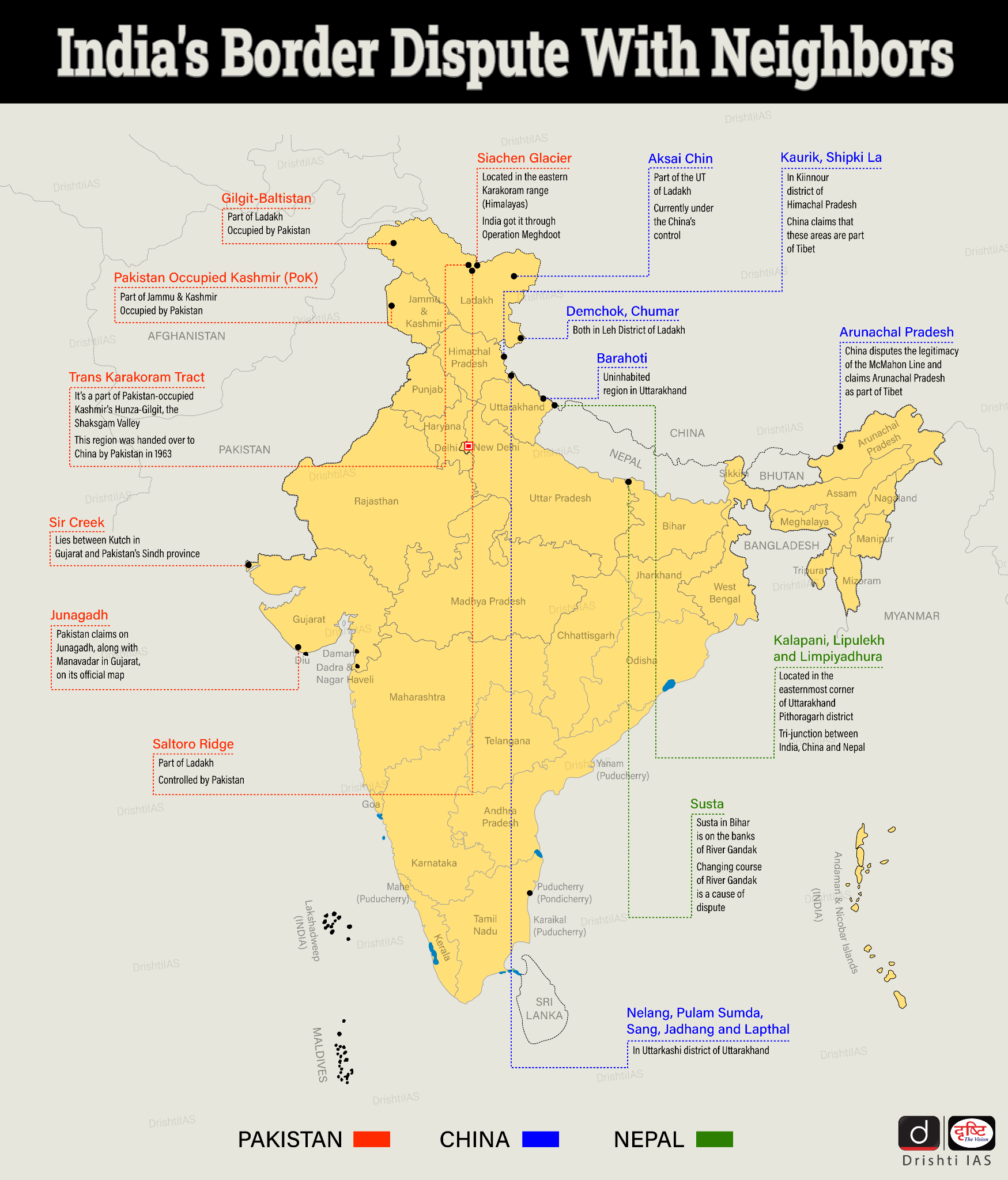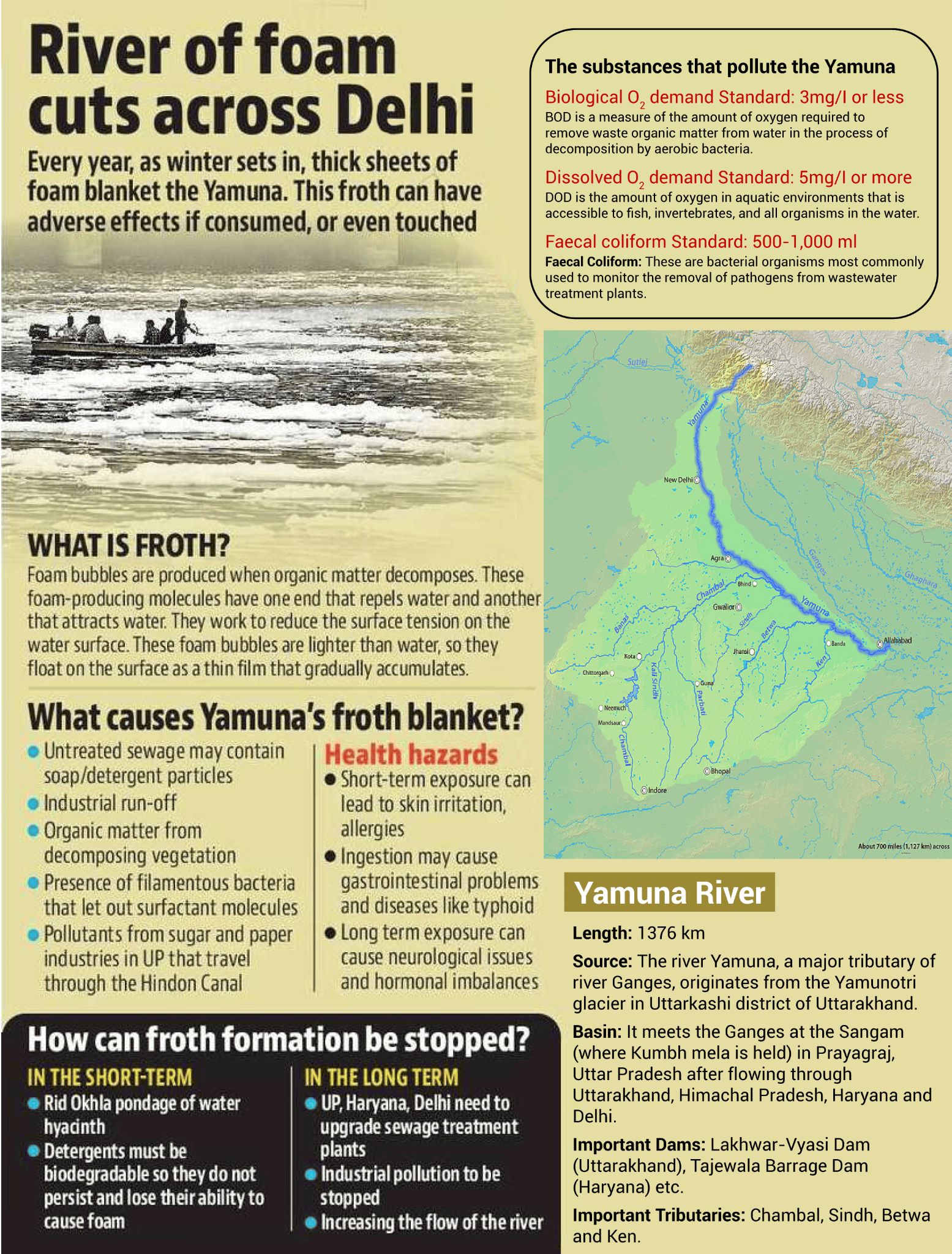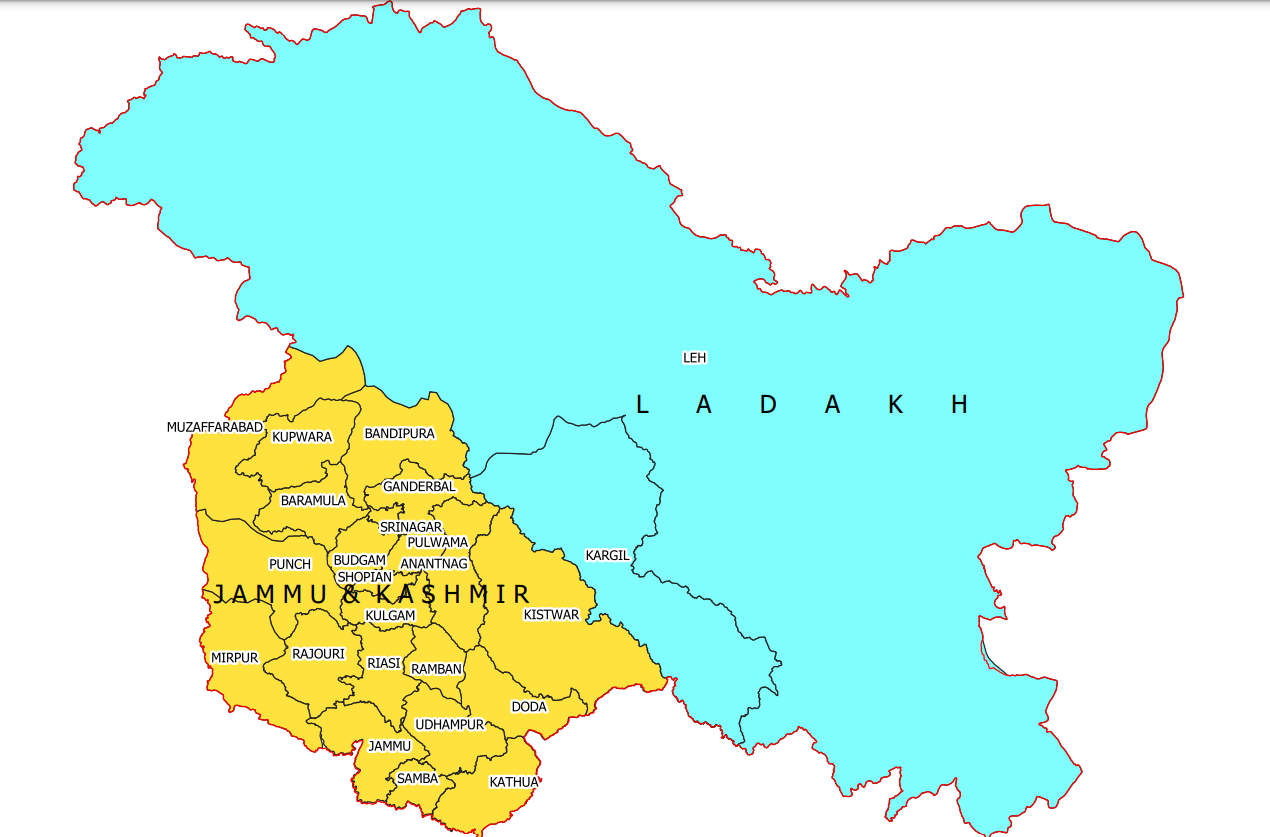Challenges in Madarsa Education
For Prelims: National Commission for Protection of Child Rights (NCPCR), Supreme Court, Right to Education, Khorasan, Uttar Pradesh Board of Madarsa Education Act 2004, Secularism, The Constitution, Fundamental rights, National Council of Educational Research and Training (NCERT).
For Mains: Significance of Right to education, Role of madrasas in education system.
Why in News?
Recently, the National Commission for Protection of Child Rights (NCPCR) has submitted before the Supreme Court that the curriculum imparted in madrasas lacks comprehensiveness and thus contravenes the mandates of the Right to Education.
- The Commission contends that the textbooks utilised in these institutions promulgate teachings centered on the doctrinal primacy of Islam.
- Madrasa, derived from Arabic, refers to an educational institution primarily associated with Islamic teachings.
What are the Recent Development Related to Madrasas?
- Supreme Court (SC) Interim Verdict:
- SC states that Section 1(5) of the RTE (Right to Education) Act says that “Nothing contained in this Act shall apply to Madrasas, Vedic Pathshalas and educational institutions primarily imparting religious instruction.”
- A law per se regulating an institution belonging to a particular community does not ipso facto [by the fact itself] offend the principle of secularism.
- Uttar Pradesh:
- The Allahabad High Court judgement dated March 2024, declared Uttar Pradesh Board of Madarsa Education Act, 2004, as “unconstitutional.”
- The Court's ruling was based on the premise that the Act contravened “the principle of secularism” enshrined in the Constitution and violates fundamental rights guaranteed under Article 14 (right to equality before the law).
- The NCPCR made its submission to the Supreme Court in response to a set of appeals challenging a verdict by the Allahabad High Court.
- NCPCR has recommended that all Muslim and non-Muslim children be removed from Madrasas and enrolled in schools to receive fundamental education as per the RTE Act, 2009.
- Assam:
- In 2023, the Assam government reclassified 1,281 madrasas as "Middle English" (ME) schools, following their transformation into general schools under the State Directorate of Elementary Education.
- This initiative aims to foster uniformity and inclusion within the state's education system.
- In 2023, the Assam government reclassified 1,281 madrasas as "Middle English" (ME) schools, following their transformation into general schools under the State Directorate of Elementary Education.
Uttar Pradesh Board of Madarsa Education Act, 2004
- The Act aimed to regulate and govern the functioning of madrasas (Islamic educational institutions) in the state of Uttar Pradesh.
- It provided a framework for the establishment, recognition, curriculum, and administration of madrasas across Uttar Pradesh.
- Under this Act, the Uttar Pradesh Board of Madarsa Education was established to oversee and supervise the activities of madrasas in the state.
What is the State of Madrasas in India?
- Number of Madrasas in India:
- As of 2018-19, India had a total of 24,010 madrasas, of which 19,132 were recognised, while 4,878 remained unrecognized.
- Recognised madrasas are affiliated with state madrasa education boards, while unrecognized madrasas follow curricula set by prominent seminaries such as Darul Uloom Nadwatul Ulama (Lucknow) and Darul Uloom Deoband.
- Uttar Pradesh has the largest share of madrasas in the country, with 11,621 recognised and 2,907 unrecognized institutions, representing 60% of India's total madrasas.
- Rajasthan had the second highest number of madrasas, with 2,464 recognised and 29 unrecognized.
- Certain states and Union Territories, including Delhi, Assam, Punjab, Tamil Nadu, and Telangana, reported having no recognised madrasas.
- As of 2018-19, India had a total of 24,010 madrasas, of which 19,132 were recognised, while 4,878 remained unrecognized.
- Education and Curriculum:
- Curriculum: Education in madrasas mirrors the structure of mainstream school and higher education, with students progressing through various levels like Maulvi (equivalent to Class 10), Alim (equivalent to Class 12), Kamil (equivalent to a Bachelor’s degree), and Fazil (equivalent to a Master’s degree).
- Medium of Instruction: The medium of instruction in charitable Madrasa Darse Nizami includes Arabic, Urdu, and Persian, while Madrasa Darse Aliya uses textbooks either published by state textbook corporations or prescribed by the National Council of Educational Research and Training (NCERT).
- A significant number of madrasa boards across India have adopted the NCERT curriculum, with compulsory subjects such as Mathematics, Science, Hindi, English, and Sociology.
- In addition to the core subjects, students can choose an optional paper, selecting either Sanskrit or Deeniyat (religious studies, including the Quran and other Islamic teachings). The Sanskrit paper includes Hindu religious scriptures and teachings.
- Funding:
- The primary source of funding for madrasas comes from the respective state governments, with supplementary support from the central government under the Scheme for Providing Education to Madrasas/Minorities (SPEMM).
- SPEMM offers financial assistance to madrasas and minority institutions across the country, facilitating their educational development and support.
- It has two sub-schemes:
- Scheme for Providing Quality Education in Madrasas (SPQEM): It focuses on improving educational standards.
- Infrastructure Development of Minority Institutes (IDMI): It addresses infrastructure enhancement.
- In April 2021, SPEMM was transferred from the Ministry of Minority Affairs to the Ministry of Education for more streamlined administration.
- The primary source of funding for madrasas comes from the respective state governments, with supplementary support from the central government under the Scheme for Providing Education to Madrasas/Minorities (SPEMM).
What are the Initiatives Related to Education?
What is the Role of Madrasas in the Indian Education System?
- Cultural Preservation: Historically, Madrasas have served to preserve and transmit Islamic culture, beliefs, and values among Muslim communities in India, fostering a sense of identity and community.
- Education and Literacy: They provide an educational platform for many Muslim children, particularly in areas where access to formal schooling is limited.
- However, concerns exist regarding the quality of education and the comparatively lower literacy rates among Muslim communities, with many students unable to progress beyond secondary education.
- Influence on Ideology: While Madrasas can promote positive values, some have been criticized for fostering extremist ideologies and anti-national sentiments, potentially contributing to social divisions and communal tensions within the country.
- Legal and Funding Issues: The existence of Madrasas raises questions about secularism and equality in education funding.
- Critics argue that public funds should not be used to support religious education without equally funding other religions to ensure uniformity and adherence to secular principles.
- Challenges to Integration: Many graduates of Madrasas face difficulties in integrating into the broader workforce due to a lack of vocational skills and modern education. The educational approach often leads to isolation from mainstream society, hindering opportunities for upward mobility and social cohesion.
What are the Issues related to the Madrasa's Education?
- Quality of Education: Many madrasas offer a curriculum that primarily focuses on religious education, often lacking in subjects like mathematics, science, and languages.
- This can lead to gaps in students' overall academic development and limit their opportunities for further education and employment.
- Regulatory Challenges: A significant number of madrasas operate without proper government oversight or regulation. This lack of regulation can result in varying quality of education, and in some cases, inadequate facilities.
- Socioeconomic Factors: Madarsa education is often associated with marginalized communities, where families may opt for these institutions due to economic constraints. This can perpetuate cycles of poverty and limit socioeconomic mobility.
- Extremism and Radicalisation: Some madrasas have been criticised for promoting extremist ideologies or fostering radicalization.
- Limited Vocational Training: Most madrasas do not provide vocational training or skills development programs. This limits students' practical skills and employability, further hindering their integration into the broader workforce.
- Gender Disparities: Many madarsas have historically been male-dominated, with fewer opportunities for female students. This can exacerbate gender disparities in education and limit women's participation in society .
- Inadequate Infrastructure: Many madarsas suffer from poor infrastructure, including inadequate classrooms, lack of libraries, and insufficient educational materials. This can significantly affect the learning environment .
- Resistance to Modernization: There can be resistance within some madarsas to adopting modern educational practices for integrating technology, which can hinder the overall development of students .
Way Forward
- Vocational Training: Introduce vocational and skill development programs within Madrasas to equip students with practical skills that enable them to compete effectively in the job market.
- Holistic Development: To ensure the right to education for all, public institutions must expand quality formal education that combines moral learning and skill development, while reducing dependence on informal and religious education systems.
- Quality Standards and Accreditation: Establish regulatory frameworks and quality standards for Madrasas, including an accreditation system to ensure compliance with modern educational practices.
- Equitable Funding: Implement fair funding policies that support all educational institutions, ensuring that public funds enhance educational quality and infrastructure without promoting religious ideologies.
- Community Engagement: Foster awareness and collaboration with parents, community leaders, and NGOs to emphasize the importance of holistic education and literacy, encouraging families to prioritize formal education for their children.
|
Drishti Mains Question: Q. Examine the role of the governments in the funding and administration of madrasas in India. What challenges do madrasas face in integrating modern education with religious instruction? |
UPSC Civil Services Examination, Previous Year Question (PYQ)
Prelims:
Q. Which of the following can aid in furthering the Government’s objective of inclusive growth? (2011)
- Promoting Self-Help Groups
- Promoting Micro, Small and Medium Enterprises
- Implementing the Right to Education Ac
Select the correct answer using the codes given below:
(a) 1 only
(b) 1 and 2 only
(c) 2 and 3 only
(d) 1, 2 and 3
Ans: (d)
Mains
Q. Despite Consistent experience of high growth, India still goes with the lowest indicators of human development. Examine the issues that make balanced and inclusive development elusive. (2019)
Q. “Education is not an injunction, it is an effective and pervasive tool for all-round development of an individual and social transformation”. Examine the New Education Policy, 2020 (NEP, 2020) in light of the above statement. (2020)
Warming of Key Biodiversity Areas (KBAs)
For Prelims: Key Biodiversity Areas (KBAs), Kunming-Montreal Global Biodiversity Framework, Andes Mountains, Tropical Forests, BirdLife International, Important Bird and Biodiversity Areas (IBA), World Conservation Congress, International Union for Conservation of Nature (IUCN), Key Biodiversity Areas Partnership, Rainforests, Mangroves, Carbon Sequestration, Nutrient Cycling.
For Mains: Effect of global warming and climate change on Key Biodiversity Areas (KBAs) in tropical ecosystems, Measures need to halt tropical ecosystem degradation.
Why in News?
Recently, a study has shown that key biodiversity areas (KBAs) in tropical forests have transitioned to new temperature regimes (higher temperature) due to global warming and climate change.
- The Kunming-Montreal Global Biodiversity Framework aims to conserve at least 30% of the world's land by 2030, with Key Biodiversity Areas (KBAs) as a core priority.
Note:
- Tropical rainforests are dense and warm forests typically found between 23.5 degrees to the north and south of the Equator.
What is the Kunming-Montreal Global Biodiversity Framework (KMGBF)?
- About: It is a multilateral treaty aimed at halting and reversing biodiversity loss globally by 2030. It was adopted in December 2022 during the 15th meeting of the Conference of the Parties (CoP) of UN CBD.
- Purpose and Goals: It ensures that by 2030 at least 30% of areas of degraded terrestrial, inland water, and marine and coastal ecosystems are under effective restoration.
- It has 23 action-oriented global targets for urgent action over the decade to 2030 with Key Biodiversity Areas (KBAs) as a core priority.
- Long-Term Vision: The framework envisions that by 2050, there will be a collective commitment to living in harmony with nature, serving as a foundational guide for current actions and policies on biodiversity conservation and sustainable use.
What are Key Highlights of the Study?
- Temperature Changes in KBAs: Up to 66% of tropical forest KBAs have entered a new phase characterised by new mean annual temperature regimes.
- Regional Temperature Shifts: The percentage of Key Biodiversity Areas (KBAs) experiencing temperature changes was 72% in Africa, 59% in Latin America, and 49% in Asia and Oceania.
- However, in Asia and Oceania, 12% of KBAs have not transitioned to the new temperature scenario though 23% of these are unprotected.
- Vertical Temperature Change: The environment beneath the forest canopy is climatically stable, with less temperature variation than in open habitats.
- Disproportionate Impact: Some KBAs in Latin America (2.9%) and Asia and Oceania (0.4%) have shifted to nearly entirely new temperature conditions, with over 80% of measurements falling outside their previous ranges.
- These include areas in the tropical Andes Mountains in Ecuador, Colombia, Venezuela, and Panama.
- Stable KBAs: Around 34% of tropical forest KBAs have not yet experienced new temperature pattern, and over half of these are under some form of protection.
- Northern Australia's tropical forests are among the least affected by novel temperature conditions.
What are Key Biodiversity Areas (KBAs)?
- Origin of the Concept: BirdLife International initiated the idea by identifying Important Bird and Biodiversity Areas (IBA). The success of this model led to the inclusion of other taxonomic groups, such as plants, butterflies, and freshwater and marine biodiversity.
- At the World Conservation Congress in Bangkok in 2004, the International Union for Conservation of Nature (IUCN) recognized the need for a unified framework, which culminated in the 2016 global KBA Standard.
- About KBAs: KBAs are sites contributing significantly to the global persistence of biodiversity.
- They may contain unique species or species found only in limited areas, and are critical for the planet’s health.
- Criteria for Recognition: There are 11 criteria grouped under five categories that a site must meet to qualify as a KBA. These categories are:
- Threatened biodiversity
- Geographically restricted biodiversity
- Ecological integrity
- Biological processes
- Irreplaceability
- Global KBA Presence: To date, more than 16,000 KBAs have been mapped worldwide.
- The Key Biodiversity Areas Partnership, comprising 13 global conservation organisations, is working to identify, map, and conserve KBAs across the globe.
- India has 862 Key Biodiversity Areas (KBAs), which are crucial for the conservation of biodiversity E.g., Western Ghats.
- The Key Biodiversity Areas Partnership, comprising 13 global conservation organisations, is working to identify, map, and conserve KBAs across the globe.
What are the Impacts of Rising Temperatures on Tropical Forests and KBAs?
- Disruption of Stable Microclimates: Sudden changes can exceed their thermal tolerance, leading to stress or mortality. Species that occupy specific niches within stable microclimates may face habitat loss or degradation.
- Threat to Biodiversity: Increased temperatures can lead to habitat degradation, particularly in sensitive ecosystems like rainforests, mangroves, and coral reefs.
- Alteration of Ecosystem Services: Rising temperatures can impair ecosystem services such as carbon sequestration, water regulation, and nutrient cycling.
- Threat of Invasive Species: Warmer temperatures may allow invasive species to thrive and outcompete native species.
- Deforestation and Degradation: Higher temperatures may exacerbate deforestation and forest degradation by making ecosystems more vulnerable to fires, pests, and diseases.
- Shifts in Species Composition: Many species may migrate towards higher altitudes or latitudes in search of cooler conditions leading to local extinction of species.
- Impacts on Human Communities: Rising temperatures can affect forest productivity threatening the livelihood of indigenous and local communities dependent on tropical forests for food, medicine, and shelter.
How to Protect Key Biodiversity Areas from Rising Temperatures?
| Develop and Scale Up Nature-based Solutions | Leverage ecosystems to mitigate climate change effects while avoiding maladaptive practices like monoculture plantations and focusing on diverse, resilient ecosystems. |
| Restore Ecosystems | Prioritise the protection and restoration of forests, wetlands, peatlands, and mangroves to enhance carbon sequestration and biodiversity. |
| Rewilding Initiatives | Explore rewilding strategies, including the reintroduction of native species, to restore ecosystems. |
| Habitat Connectivity Initiatives | Create corridors to connect fragmented habitats, allowing species to migrate and adapt to changing climatic conditions. |
| Invasive Species Management | Monitor and inspect goods (plants, animals, soil) at borders to prevent the introduction of invasive species and introduce natural predators that specifically target the invasive species. |
|
Drishti Mains Question: What are Key Biodiversity Areas (KBAs)? How are they impacted by global warming and climate change? |
UPSC Civil Services Examination Previous Year Question (PYQ)
Prelims
Q.“Momentum for Change: Climate Neutral Now” is an initiative launched by (2018)
(a) The Intergovernmental Panel on Climate Change
(b) The UNEP Secretariat
(c) The UNFCCC Secretariat
(d) The World Meteorological Organisation
Ans: (c)
Q. With reference to ‘Global Environment Facility’, which of the following statements is/are correct?(2014)
(a) It serves as financial mechanism for ‘Convention on Biological Diversity’ and ‘United Nations Framework Convention on Climate Change’
(b) It undertakes scientific research environmental issues at global level
(c) It is an agency under OECD to facilitate the transfer of technology and funds underdeveloped countries with specific aim to protect their environment
(d) Both (a) and (b)
Ans: (a)
Mains
Q. How is the Government of India protecting traditional knowledge of medicine from patenting by pharmaceutical companies? (2019)
SC Upholds Section 6A of Citizenship Act
For Prelims: Supreme Court, Section 6A of the Citizenship Act 1955, NGOs, Assam Accord of 1985, Bangladesh Liberation War,
For Mains: Features of Section 6A of the Citizenship Act 1955, Issues related to Assam Accord, Implications of SC Judgement regarding Section 6A of the Citizenship Act 1955.
Why in News?
Recently, the Supreme Court upheld the constitutionality of Section 6A of the Citizenship Act 1955, which permits immigrants from Bangladesh residing in Assam to secure Indian citizenship, as a valid piece of legislation aligned to the Preambular value of fraternity.
- According to the court, the principle of fraternity cannot be selectively applied to one section living in Assam while another lot are labelled “illegal immigrants”.
- The petitioning NGO argued to court that Section 6A threatened Assamese people's right to preserve their political, linguistic, and cultural identity by bringing illegal immigrants and altering its demography.
What is the Supreme Court’s Ruling?
- Majority Opinion:
- Reaffirming Constitutional Validity: The court ruled that Section 6A does not violate Articles 6 and 7 of the Constitution, which set 26th January 1950, as the cut-off for granting citizenship to migrants from East and West Pakistan.
- Section 6A applies from a much later date, so it operates separately from the earlier constitutional provisions.
- The cutoff date of 25th March 1971 is justified, as the Pakistani Army initiated Operation Searchlight to suppress the Bangladeshi nationalist movement in East Pakistan on 26th March 1971.
- The Court stated that the petitioners failed to prove that the Assamese people's ability to safeguard their culture was compromised by Section 6A.
- The Court emphasised that constitutional and statutory provisions already protect Assam's cultural and linguistic interests.
- Power of Union: Parliament enacted Section 6A under its powers from Article 246 and Entry 17 of the Union List, which addresses citizenship, naturalization, and aliens.
- Assam's special citizenship law does not violate Article 14 (Equality), as the state's migrant situation was distinct from the rest of India.
- Acknowledging the Issue: The court affirmed that the ongoing migration from Bangladesh has placed a significant burden on Assam.
- It was emphasized that a nation can simultaneously accommodate immigrants and refugees while focusing on sustainable development and ensuring an equitable distribution of resources.
- Clarifying Responsibility: It was emphasised that Section 6A should not be solely blamed for this situation.
- The government’s failure to detect and deport post-1971 immigrants from Bangladesh in a timely manner was a major contributing factor.
- Criticizing the System: The court found that the current mechanisms and Tribunals responsible for identifying illegal immigrants in Assam are inadequate.
- These systems are not sufficient for the timely enforcement of Section 6A and related laws, such as the Immigrants (Expulsion from Assam) Act, 1950, and the Foreigners Act, 1946.
- Need for Oversight: The enforcement of immigration and citizenship laws requires judicial supervision and cannot be left to the discretion of authorities.
- The Court asked the CJI to constitute a Bench for monitoring the implementation of these laws in Assam.
- Reaffirming Constitutional Validity: The court ruled that Section 6A does not violate Articles 6 and 7 of the Constitution, which set 26th January 1950, as the cut-off for granting citizenship to migrants from East and West Pakistan.
- Dissenting Opinion:
- Dissenting view: The dissent declared Section 6A unconstitutional with prospective effect, rejecting concerns that different ethnic groups would infringe on the cultural and linguistic rights of others.
- Balancing Development and Immigration: The dissent asserted that sustainable development and population growth can coexist without conflict.
- Accepting the petitioners' argument, which claimed that immigration impacts local rights to sustainable development, could lead to restrictions on domestic inter-State movement.
What is Section 6A of the Citizenship Act 1955?
- About Section 6A:
- It was enacted as part of the Citizenship (Amendment) Act, 1985, following the Assam Accord of 1985.format
- It grants Indian citizenship to immigrants who entered Assam from Bangladesh before 1st January 1966.
- Those who entered between 1st January 1966 and 25th March 1971, can be conferred citizenship after fulfilling certain prescribed procedures and conditions.
- The section, however, denies citizenship to immigrants who arrived in Assam after 25th March 1971.
- The Assam Accord:
- The Assam Accord was a tripartite agreement between the Central Government, the State Government of Assam, and the leaders of the Assam Movement. It sought to end the influx of illegal migrants from Bangladesh.
- It introduced Section 6A into the Citizenship Act, of 1955, exclusively for Assam.
- This provision addresses the issue of large-scale migration preceding the 1971 Bangladesh Liberation War.
- It mandates the detection and deportation of foreigners who entered Assam after 25th March 1971, marking the creation of Bangladesh.
- The introduction of Section 6A reflects the specific historical and demographic challenges faced by Assam during this critical period.
What can be the Implications of this Judgement?
- Immigrant Recognition: By upholding Section 6A, the judgment grants continued legal protection and citizenship rights to immigrants from Bangladesh (entered Assam before 25th March 1971).
- This reinforces India’s commitment to protecting those displaced by the Bangladesh Liberation War.
- Assamese Identity Preservation: The majority opinion dismisses the notion that the presence of immigrants automatically infringes upon the cultural and linguistic rights of the Assamese people.
- This means that despite demographic changes, the Assamese community’s rights are protected through existing constitutional safeguards (Article 29(1)), allowing them to preserve their identity.
- Tensions on Demographic Shift: Critics argue that continued immigration strains Assam’ s demographic balance, threatening its cultural identity and economic resources.
- This could fuel local demands for stricter immigration controls or even political mobilisation around cultural preservation.
- Resource Allocation: Immigrants continue to be eligible for citizenship and the resources and rights that come with it, potentially increasing strain on Assam’s already limited economic resources.
- This may necessitate more robust policies to ensure equitable resource distribution and prevent further economic disparities.
- Pressure on Immigration Laws: The judgment stresses the need for more effective implementation of immigration laws, particularly the detection and deportation of illegal immigrants who entered after the 1971 cut-off date.
- Bangladesh Relations: By not recognizing post-1971 immigrants as Indian citizens, the judgement could lead to tensions with Bangladesh, as it may be seen as India pushing responsibility for these immigrants onto its neighbour, potentially straining diplomatic ties.
- The decision could impact regional cooperation on border management, migration control, and security, complicating India-Bangladesh relations.
|
Drishti Mains Question: Discuss the implications of the Supreme Court's recent judgement on Section 6A of the Citizenship Act for Assam. How does the judgement balance humanitarian concerns with local development challenges? |
UPSC Civil Services Examination, Previous Year Question (PYQ)
Prelims
Q. With reference to India, consider the following statements:
- There is only one citizenship and one domicile.
- A citizen by birth only can become the Head of State.
- A foreigner once granted citizenship cannot be deprived of it under any circumstances.
Which of the statements given above is/are correct?
(a) 1 only
(b) 2 only
(c) 1 and 3
(d) 2 and 3
Ans: (a)
NBWL Approves Road Expansion in Ladakh
Why in News?
The standing committee of the National Board for Wildlife (NBWL) has approved five key road stretches in Ladakh (four of which pass through Karakoram Wildlife Sanctuary), including a route to Daulat Beg Oldie (DBO).
- The NBWL approved the road stretches with conditions to implement wildlife passage plans to protect species in the Karakoram sanctuary.
- The move significantly aids the Ministry of Defence, enhancing infrastructure development along the LAC in response to the 2020 India-China clashes in Galwan Valley.
What is the Strategic Significance of this Move?
- These routes are crucial for troop movement and logistics and supporting the civilian population particularly after the 2020 Galwan Valley clashes.
- The existing Durbuk-Shyok-DBO (DS-DBO) route, which is 255 km long, runs along the LAC and is within sight of Chinese-held territory to its east.
- Daulat Beg Oldie (DBO) is the country’s sorthernmost military outpost in Ladakh and houses its highest airstrip.
- The Leh-Chalunka road (one of the five approved road stretches), connects the Indus Valley with the Shyok Valley and traverses the Ladakh range, representing the sole motorised route over this range.
What are the Other Major Developmental Projects along India's Border?
- India-China Border:
- India-Pakistan Border:
- Smart Fencing in India (Comprehensive Integrated Border Management System – CIBMS)
National Board for Wildlife (NBWL)
- National Board for Wildlife is a statutory Board constituted officially in 2003 under the Wild Life (Protection) Act, 1972.
- It replaced the Indian Board for Wildlife, established in 1952.
- The NBWL is chaired by the Prime Minister and is responsible for promotion of conservation and development of wildlife and forests.
- The board is ‘advisory’ in nature and can only advise the Government on policy making for conservation of wildlife.
- It serves as an apex body for the review of all wildlife-related matters and for the approval of projects in and around national parks and sanctuaries.
- The standing committee of NBWL is chaired by the Minister of Environment Forest and Climate Change.
- The standing committee approves all the projects falling within protected wildlife areas or within 10 km of them.
Read More: India's Border and It’s Management
UPSC Civil Services Examination, Previous Year Questions (PYQs)
Prelims
Q1. With reference to ‘National Investment and Infrastructure Fund’, which of the following statements is/are correct? (2017)
- It is an organ of NITI Aayog.
- It has a corpus of `4,00,000 crore at present.
Select the correct answer using the code given below:
(a) 1 only
(b) 2 only
(c) Both 1 and 2
(d) Neither 1 nor 2
Ans: (d)
Nonylphenol Ethoxylates and Nonylphenol
Why in News?
A report titled "Nonylphenol — An Endocrine Disrupting Chemical" was released by Toxics Link, an environmental research organisation, and the US-based non-profit Environmental Defense Fund.
- The report highlights the widespread use of Nonylphenol Ethoxylates (NPEs) and Nonylphenol (NP) in India and the associated environmental and health risks
What are Nonylphenol Ethoxylates (NPEs) and Nonylphenol (NP)?
- Chemical Characteristics: These are surfactants that contribute to environmental pollution, particularly causing frothing in the Yamuna River, indicating high levels of pollutants.
- These are recognised as an endocrine-disrupting chemical, toxic to aquatic life, and detrimental to human health, affecting reproductive and developmental processes.
- Regulatory Status: NPEs are banned in many countries for use in detergents; however, India currently lacks specific regulations governing these chemicals.
- NP was banned in the cosmetics sector in India in 2009.
- Usage in Industries: NP and NPEs are prevalent in various sectors, including textiles and leather, detergents and cleaning products, paper and pulp, food packaging, cosmetics, construction, automotive, agrochemicals, paints, and metalworking fluids.
- Health and Ecological Concerns:
- Toxicity to Aquatic Life: NP is toxic to fish, aquatic plants, and invertebrates, causing acute and chronic poisoning that reduces survival rates, impairs growth, and leads to reproductive failure.
- Human Health Risks: NP acts as an endocrine-disrupting chemical, mimicking estrogen and causing hormonal imbalances, which can lead to reproductive disorders and increased cancer risk.
- Environmental Persistence: NP is resistant to degradation and can remain in aquatic ecosystems for long periods, continuously impacting wildlife and potentially entering the human food chain.
- Recommendations for Safer Alternatives:
- The report suggests adopting safer, cost-effective, and technically viable alternatives to NP and NPEs. However, the transition towards such alternatives has been slow in India.
UPSC Civil Services Examination, Previous Year Question (PYQ)
Q. How is the National Green Tribunal (NGT) different from the Central Pollution Control Board (CPCB)? (2018)
- The NGT has been established by an Act whereas the CPCB has been created by an executive order of the Government.
- The NGT provides environmental justice and helps reduce the burden of litigation in the higher courts whereas the CPCB promotes cleanliness of streams and wells, and aims to improve the quality of air in the country.
Which of the statements given above is/are correct?
(a) 1 only
(b) 2 only
(c) Both 1 and 2
(d) Neither 1 nor 2
Ans: (b)
World Telecommunication Standardisation Assembly (WTSA-24)
While addressing the inaugural sessions of the World Telecommunication Standardisation Assembly (WTSA-24) and India Mobile Congress-2024, the Prime Minister advocated for the development of a global regulatory framework for digital applications along with responsible use of Artificial Intelligence (AI).
- World Telecommunication Standardisation Assembly (WTSA-24):
- WTSA-24 is organised by the International Telecommunication Union (ITU).
- ITU is a specialized agency of the UN responsible for matters related to information and communication technologies.
- The WTSA is a governing conference that takes place every four years and is a key event for the ITU Standardization Sector.
- WTSA-24 is organised by the International Telecommunication Union (ITU).
- India's Telecom Sector:
- It is the second-largest telecommunications market in the world, with over one billion subscribers. The sector is a key part of India's digital economy with a 6.5% contribution to the country's GDP.
- The telecom sector is expected to grow at a compound annual growth rate (CAGR) of 9.4% from 2020 to 2025.
- India’s initiative for providing safer and better telecom services:
Read More: Bharat 6G Project
NOTTO Initiatives
Recently, the National Organ and Tissue Transplant Organisation (NOTTO) issued key initiatives regarding cornea and tissue transplants.
- Centralised Database: NOTTO is developing a centralised database for patients awaiting cornea and other tissue transplants.
- Mandatory Linking: All organ transplant, retrieval centres, cornea transplant centres, and tissue banks must link their data to NOTTO's national registry.
- Eye Banks Performance: Eye banks are expected to collect a minimum of 50 eyes or 100 corneas per year.
- Under the Transplantation of Human Organs and Tissues Act, 1994 (THOTA), eye banks must collect at least 500 corneas over five years to maintain their certification.
- Presumed Consent for Cornea Donation: NOTTO is considering an opt-out model for cornea donation, where hospital deaths are presumed cornea donors unless the individual has explicitly opted out.
- NOTTO is the apex organisation set up under the Directorate General of Health Services, Ministry of Health and Family Welfare to monitor organ and tissue transplant services.
Read More: NOTTO Annual Report 2023-24
Increase in Global Public Debt by 2030
According to the latest report of the International Monetary Fund (IMF) on fiscal policy, global public debt is expected to reach a record USD 100 trillion.
- Key Highlights of the Report:
- Global public debt is expected to reach 93% of global GDP in 2024, and to approach 100% by 2030.
- The IMF introduced a "debt-at-risk" method to better assess uncertainties in debt projections, estimating that global public debt could surge to 115% of GDP by 2026 in a worst-case scenario.
- Fluctuations in government borrowing costs are increasingly driven by global factors.
- Implying that high debt levels in major countries could raise the volatility of sovereign yields and debt risks in other countries.
- Recommendation:
- Countries should use the current period of lower inflation and interest rate cuts to strengthen their financial reserves.
- Countries need to implement fiscal adjustments between 3.0% and 4.5% of GDP to bring global public debt under control.
- IMF came into formal existence in December 1945. It was set up along with the World Bank after World War II to assist in the reconstruction of war-ravaged countries.
- IMF and WB agreed to be set up at a conference in Bretton Woods in the US. Hence, they are known as the Bretton Woods twins.
- Its primary purpose is to ensure the stability of the international monetary system.
- Major reports of the IMF: Global Financial Stability Report and World Economic Outlook.
Read More: Financial Stability Report, June 2024
First Chief Minister of J&K UT Takes Charge
Recently, Omar Abdullah of the National Conference was sworn in as the Chief Minister of the UT (union territory) of Jammu and Kashmir.
- Oath of Office: As per Article 164(3), the CM and other ministers are administered the oath of office by the Governor (or LG in Union Territories).
- The oath signifies allegiance to the Constitution and the discharge of duties in accordance with the law.
- Omar Abdullah is the first CM of the UT to assume office following the abrogation of Article 370 and Jammu and Kashmir’s transition from a state to a Union Territory in 2019.
- President's Rule Revoked: Following the election results, President’s Rule was revoked in J&K.
- President's Rule: Article 356 of the Constitution allows the President to impose direct governance (President's Rule) in a state/Uts when the state government is unable to function as per constitutional provisions.
Read More: Chief Minister

